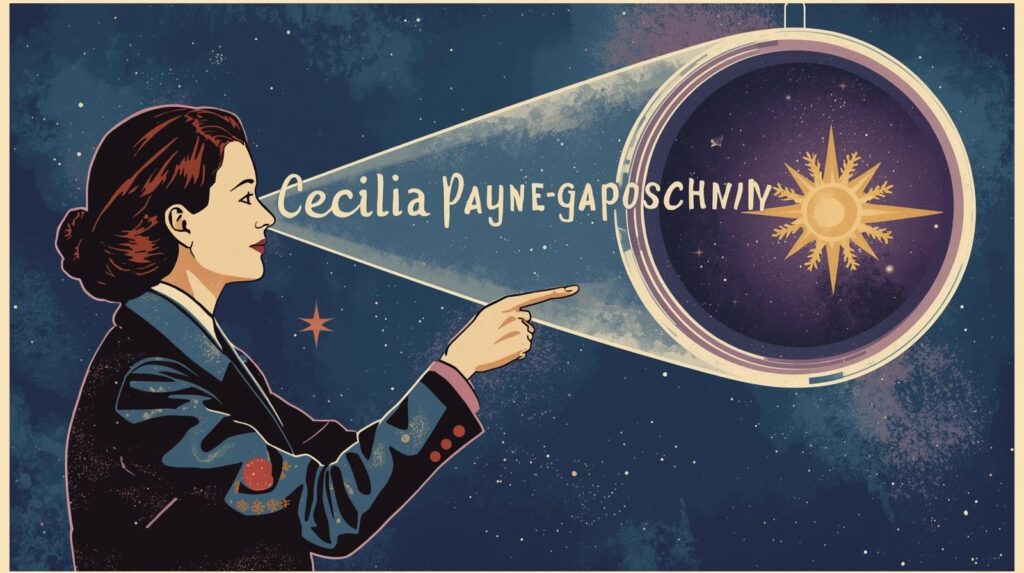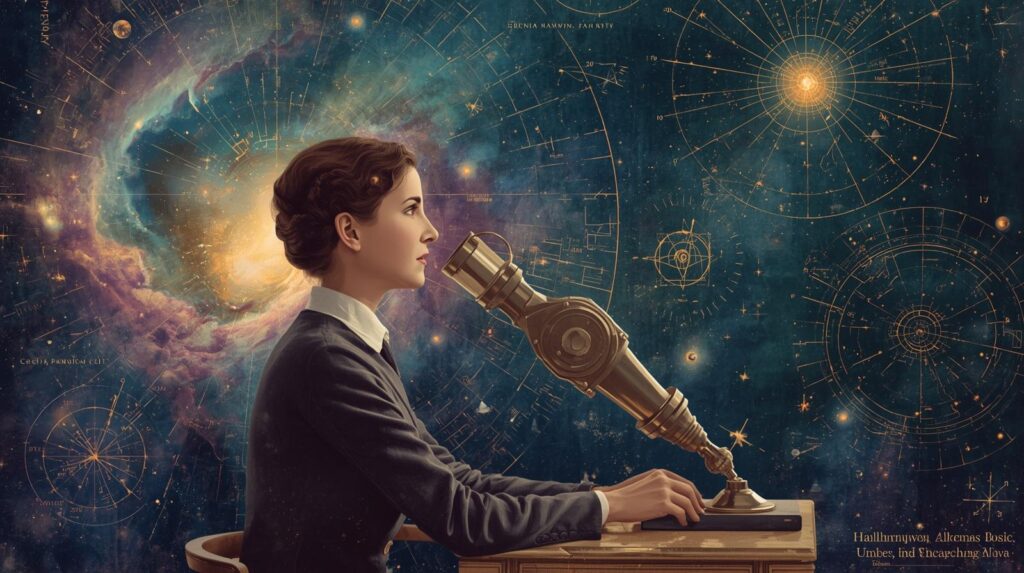Cecilia Payne-Gaposchkin – The Woman Who Told Us What Stars Are Made Of
Have you ever looked at the night sky and wondered, what are stars really made of? For thousands of years, people believed that stars must be similar to Earth—fiery balls packed with heavy elements like iron. Even the smartest scientists of the early 20th century thought this way.
But then came Cecilia Payne-Gaposchkin, a brilliant young woman whose curiosity and determination changed our entire understanding of the universe. Her discovery showed that stars are not like Earth at all—they are made mostly of hydrogen and helium. This simple truth completely transformed astronomy and gave us a new picture of the cosmos.
Early Life and the Road to Harvard
Cecilia Payne was born in England in 1900. From the very beginning, she was fascinated by science. But as a young woman in the early 20th century, opportunities were limited. Women were often told that higher education and serious scientific research were not for them.
She studied at Cambridge University, but women there couldn’t even receive full degrees at the time. Despite her intelligence and passion, Cecilia faced roadblocks at every step. But instead of giving up, she kept looking for a way forward.
In 1923, an opportunity came. Cecilia crossed the Atlantic Ocean and moved to America to join the Harvard College Observatory. At Harvard, women were not yet professors or recognized researchers. They were hired as “computers,” which meant carefully analyzing photographs of stars stored on glass plates. It was repetitive, painstaking work, but Cecilia loved it. She saw those glass plates not just as images but as puzzles waiting to be solved.

Discovering the Truth About Stars
While working at Harvard, Cecilia came across the ideas of Meghnad Saha, an Indian physicist and mathematician. Saha had developed an important equation that explained how heat changes atoms and affects their spectra—the colorful patterns of light that stars emit.
These spectra are like fingerprints. Each element produces a unique pattern, and by studying these patterns, scientists can figure out what stars are made of. Using Saha’s equation and thousands of hours of her own careful research, Cecilia realized something that nobody else had seen clearly before.
In 1925, during her Ph.D. research, she made a discovery so shocking that even she hesitated to publish it: stars are made mostly of hydrogen and helium, with only tiny traces of other elements.
This went against everything scientists believed at the time. If she was right, it meant that the building blocks of the universe were not heavy materials like iron but the two lightest elements in existence. The stars were not fiery versions of Earth—they were something entirely different.
Facing Resistance
Instead of being celebrated, Cecilia’s research was doubted. The idea seemed too radical. The leading astronomer Henry Norris Russell told her she must be mistaken. Under pressure, she added a note in her thesis saying her results might be “uncertain.”
The irony is that a few years later, Russell came to the same conclusion using his own research. When he announced it, the scientific world accepted the discovery—and he received much of the credit. Cecilia’s role was overlooked, partly because she was a woman in a field dominated by men.
For years, her contribution remained hidden in the shadows. But the truth of her discovery could not be denied: she had solved one of the biggest mysteries in astronomy.
Struggles as a Woman in Science
Cecilia Payne-Gaposchkin’s journey was never easy. At Harvard, she worked long hours for low pay. Women were often excluded from recognition, promotions, and opportunities. They were seen as assistants rather than leaders.
But Cecilia’s love for science was stronger than the unfairness she faced. She spent countless nights studying star plates, piecing together the secrets of the universe. Her sharp mind and determination kept her going when others might have given up.
She once said that truth always prevails in the end—and her life is proof of that.
A Quiet Revolution
Even though she wasn’t given proper credit at first, Cecilia’s discovery quietly revolutionized astronomy. By proving that stars were mostly hydrogen and helium, she opened the door to a new understanding of how the universe works.
Her work explained not just what stars are made of, but also how they live and die. Over time, stars fuse hydrogen into helium and eventually create heavier elements like carbon, oxygen, and iron. These elements form planets—and even life. In other words, everything around us, including us, began in the heart of stars.
Her research also became the foundation for later discoveries about galaxies, the Big Bang, and the life cycle of the universe. Modern space telescopes and missions still depend on the truths she uncovered a century ago.
Inspiring Future Generations
Cecilia Payne-Gaposchkin’s story continues to inspire. Scientists like Franciele Kruczkiewicz, who studies space chemistry today, see her as a role model. Her story speaks to anyone who feels like an outsider in science or any other field. It shows that persistence, curiosity, and courage can break through barriers.
She also paved the way for women in astronomy. By proving her worth through groundbreaking discoveries, she showed that women belong in science, not just as assistants but as leaders and innovators.

Recognition at Last
For many years, Cecilia’s name was missing from the history books. But slowly, recognition came. In 1977, she was awarded the Henry Norris Russell Prize, ironically named after the very man who once doubted her.
She also made history at Harvard by becoming the university’s first female full professor and later the head of the astronomy department. These achievements were not just personal victories—they were milestones for all women in science.
Today, her story is told in books, documentaries, and classrooms around the world. Schools and observatories carry her name, ensuring that her legacy continues to inspire.
Lasting Legacy
Cecilia Payne-Gaposchkin’s discovery is now seen as one of the most important in astronomy, as groundbreaking as the detection of cosmic background radiation or the discovery of exoplanets. Without her, our picture of the universe would be incomplete.
She revealed that stars—the very lights we see every night—are made of hydrogen and helium. She showed that the universe is not built from heavy material but from the lightest elements, and that from these simple beginnings, all of creation unfolded.
Her journey was one of genius, courage, and resilience. Against the odds, she uncovered the truth of the stars and left a legacy that continues to guide astronomers today.
Conclusion
Cecilia Payne-Gaposchkin didn’t just discover what stars are made of—she proved that truth has the power to shine, no matter how long it takes. Her life is a reminder that science is driven not just by facts, but by the passion of people who dare to ask questions and refuse to give up.
Next time you look at the night sky, remember that the twinkling stars above us are mostly hydrogen and helium—a truth revealed by a woman whose determination lit up the universe.
